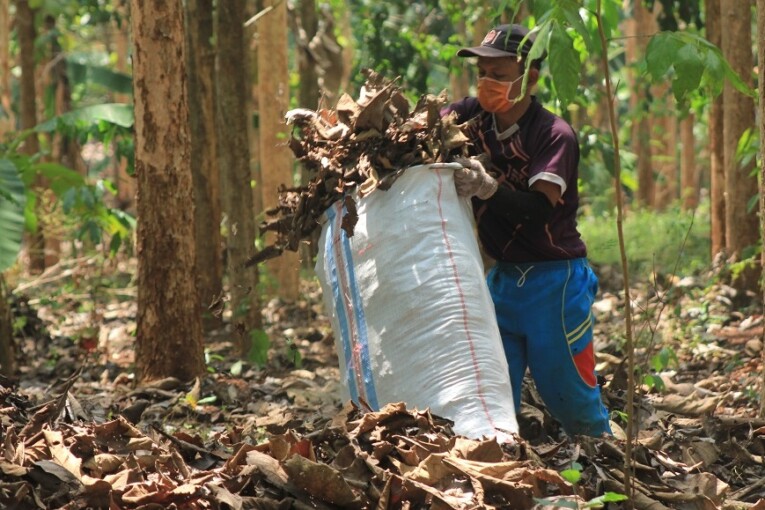
Researchers from Faculty of Veterinary Medicine UGM have utilised teak tree leaves for cow feed. This step was taken to resolve the difficulty farmers were facing in Gunungkidul regency to find the feed during the dry season. Some of the farmers had to buy green feeds from outside of the regency to meet the needs.
“Gunungkidul regency has grown many teak trees, the leaves are abundant there. But these have yet to be utilised so we keep an eye on that potential for the cattle,” said Dr. Drh. Sarmin, researcher, when met on campus on Thursday (2/1).
Before using the feed from the fermented teak leaves, the farmers bought elephant grass and corn leaves and stems as feed from outside. Farmers who have 2-3 cows or goats would buy as many as 4-5 bundles of grass. “It costs them rather much for the cattle,” he said.
The making of fermented dry teak leaves, according to Sarmin, was aimed at inviting the farmers to make use of the unused dry teak leaves. But, the farmers have also been trained to process the waste as cattle silage. Because, during this time the leaves are just burnt down or left to rot rather than being used. “We teach them how to make the fermented feed so during the dry season, they would have stocks,” he said.
To make the feed, said Sarmin, the dry leaves were collected in a big tank and mixed with concentrates. In order to allow fermentation, EM4, a liquid containing bacteria and molasses are added to it. “We mix all the materials evenly and let the mix fermented for 21 days until a certain aroma appears,” he said.
According to Sarmin, the UGM researchers also used banana tea trunks and straw with the same method. “We have tested other easily available and cheap materials, such as banana tea trunks, and straw,” he added.
This technology has been applied in Kemiri village, Gunungkidul regency, through Appropriate Technology Dissemination programme. Besides, on Saturday, 28 December 2019, Sarmin along with researchers Dr. drh. Soedarmanto Indarjulianto and Dr. drh. Irkham Widiyono submitted grass shredders, oil sieve, and cassava cutters to cassava food makers.
Soedarminto Indarjulianto, said the handover of such machines was expected to provide already ground feeds for the cattle that previously consumed hard feeds like corn leaves and buffalo grass stems. “We hope the feed resource and cattle digestion process as well as productivity would increase,”
Wasidi (60), member of a farmer group in the village said during the dry season, he bought corn leaves and stems for the cattle. “I buy 6 bundles of feed, each costs 5 thousand,” he said. In the dry season, it’s hard for the farmers to get the feed, so they have to buy it from other cities through an agent.
The majority of the village residents raise cattle like cows, sheep, and goats. Wasidi keeps 3 goats which were given by the Faculty of Veterinary Medicine UGM.
The training programme for making the fermented feed has been helpful to the farmers. In addition, they are taught on how to make mineral nutrition sources. (Humas UGM/Marwati)


